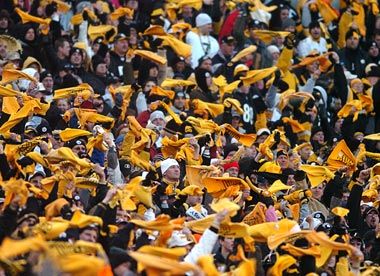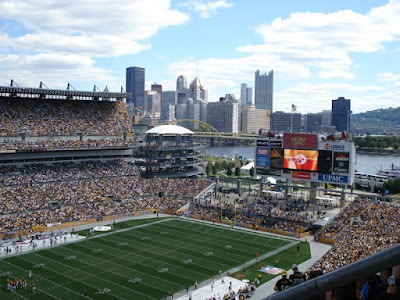Learning By Cab
After spending time in Derry, we wanted to learn more about the Troubles in Belfast. To do this, we took a cab tour of the Catholic and Protestant neighborhoods.
Somehow, we got gypped out of taking a black cab, but it turned out okay because our tour guide was very passionate about explaining the Troubles to us. When the tour ran long, he told us that always happens to him because he talks so much. Luckily, his talking was interesting. He drove us around to different sites in the neighborhoods, such as places that had been bombed, murals, the church where developments for the Good Friday Agreement took place, and memorials. Along the way, he gave us a running commentary. He told us right off the bat that he tries not to be biased, but it quickly became apparent that staying neutral was impossible for him. He had grown up in the Catholic neighborhood, and his family was forcibly removed from the neighborhood when he was little. While it would have been nice to talk to someone from the Protestant side as well, it was fascinating to hear about the Troubles from someone whose life was so directly impacted.
He spent a lot of time explaining the meanings behind the murals on Falls Road, which runs through the Republican/Catholic neighborhood. It helped to hear the reasoning behind some of the murals. For instance, I assumed that the one mural was an ad for the taxi company giving the tour – Taxi Trax – but we learned that the murals was in commemoration of the taxi cab drivers who continued to provide transportation to the Catholic area of their own accord after the city stopped public transportation there.
He took us to a memorial park in remembrance of those who had died during the Troubles from the neighborhood. Next to the park, a giant wall known as the “Peace Wall” divides the Catholic and Protestant neighborhoods. The gates are still closed every night to minimize trouble. According to our guide, the British government places the wall smack dab against the houses in the Catholic neighborhood, while a large expanse lies between the walls and the houses in the Protestant neighborhood. I’m not sure if the placement of the wall was intentional, or if there is some sort of rationale for the placement, but we saw that the wall was much closer to the Catholic side as he said.
People on tours write messages of peace on the side of the wall filled with graffiti. Our guide told us that he hoped that someday, we could watch them tear down the wall on television like they had done to the Berlin Wall. Only then, he said, would real peace and progress be achieved.
After we left the Falls Road area, he took us to Shankill Road, which runs through the Protestant/Unionist neighborhood. In the Catholic neighborhood in Derry, we saw Irish colors everywhere. In the Shankill Road area of Belfast, British flags flew all around. (Later, we realized that the neighborhood in which we were staying also flew British flags, which we had not noticed earlier. I found myself beginning to wonder about the religion and politics of every person to whom we talked.)
Our guide told us that a couple of years ago, he would not have entered the Shankill neighborhood, and he would have handed us off to his Protestant counterpart. It was obvious that he felt uneasy being in the Protestant neighborhood. I think he was relieved it started raining harder, so we didn’t have to get out of the car much.
The Troubles are a fascinating part of Irish history, not the least of which because they were so recent. Like many things we learn about during our travels, more questions are raised than answered, but our learning process continues.
Here we go, Steelers, here we go!
I can’t let opening day of the 2010-2011 Pittsburgh Steelers season go by without a little mention here on Surrounded by the Sound. While not about travel per se, missing out on good stuff at home is part of being on the road. Missing the entire Steelers season is going to be rough for us. The fever that surrounds Pittsburgh during the season is incredible. Everyone – and I mean EVERYONE – gets caught up in it. It dominates the local news – well, okay, this happens during the off-season as well (a Steeler sneezed? Lead story!) Parents put their unborn children on the waiting list for season tickets. On Fridays, benevolent employers relax the dress codes to celebrate the upcoming game, so downtown is filled with office workers dressed in black and gold on top and work pants on the bottom. Tortilla chips, ice cream, bagels, and Smiley Cookies magically change colors to black and gold. Around noon on Sundays, Giant Eagle (a local grocery chain) is a madhouse but every shopper and employee is decked out in a Steelers jersey or t-shirt. At Heinz Field, the noise isn’t as deafening as it once was at Three Rivers Stadium, but the sound of 65,000 fans working themselves into a frenzy in a sea of yellow Terrible Towels is a sight and sound to behold. The fever is downright contagious, and it is part of the essence of Pittsburgh itself.

Terrible towels at Heinz Field; image from www.thesteelers.com
Opening day is always so full of anticipation: who is going to win the division? Could this be our year? Can the team pull through without Ben Roethlisberger on the field for four games – and – sounding like a sports commentator now – how will Ben’s off-season troubles affect dynamics with the team? How will Maurkice Pouncey fare in his rookie season? We thought about paying for a subscription to watch the games on the internet, but the chances of getting consistent, fast internet for the whole season is slim to none. So it will be our turn, now, to live vicariously through everyone at home instead of the other way around. Here we go…
Making Places Real
Plagued by violence for so long, Belfast is reduced on the news and in music to a city dominated by the Troubles. Van Morrison, a native of Belfast, is one of the few singers who sing about the good things in Belfast. We visited two places that appear in Van Morrison’s songs. One of my favorite parts of traveling is when dots on a map or names in a song become real, living places.
Hyndford Street
Take me back, take me way, way, way back
On Hyndford Street…
This is the street where Van Morrison was born and raised. Much as it was when Van Morrison was growing up, the street is in the middle of a working-class neighborhood with small, sensible houses.
Cyprus Avenue
And I’m caught one more time
Up on Cyprus Avenue…
Near Hyndford Street, Cyprus Avenue stands out from the others around it. Many years ago, a developer envisioned a grand avenue. He planted big cyprus trees lining the street that would someday grow into big, stately trees, providing shade and magnificence to the avenue. The homes there are not mansions, but are considerably bigger than the houses on Hyndford Street. Apparently, Van Morrison used to go to Cyprus Avenue to daydream, and later wrote a song about the avenue.














